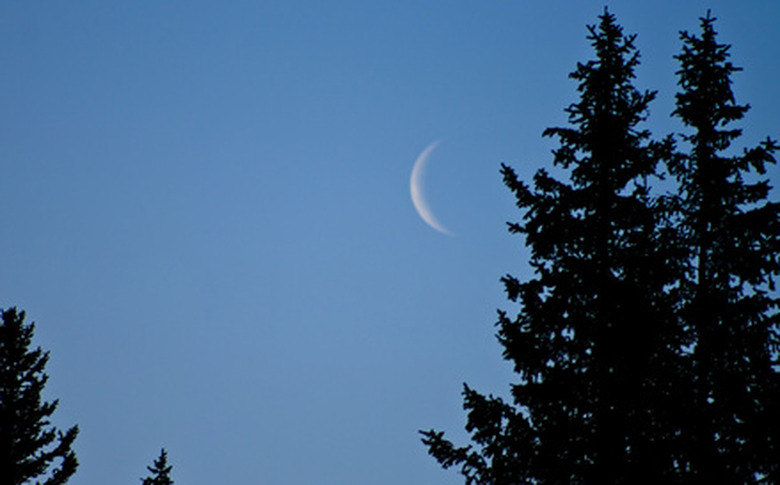List Of Evergreens
Evergreens are plants that retain their green foliage all year round. Conifer trees–with needles and cones–are the most common evergreens, but many scale-leaved and broad-leaved trees also stay green all winter. Evergreen shrubs are also a valuable landscape addition, providing windbreaks and privacy screening when planted in hedges, or an attractive individual accent planting.
Needled Evergreens
Needled evergreens or conifers are plants with long, thin pointed foliage, which also bear their seeds in cones. Needled evergreens include tidy "Christmas tree" pyramid shaped trees with tight needles and grayish green to blue foliage, and towering majestic pines with long soft dark green needles. The University of Missouri Extension's recommendations for evergreen pines for landscape use include the towering white pine (pinus strobus) which grows in rural settings in much of the United States, but not in urban areas as it is sensitive to pollution; the Austrian pine (Pinus nigra) with its dark, bristly-looking needles; and the Scotch pine (Pinus sylvestris) which is often grown for Christmas trees. Spruce trees suggested for landscape use include the Norway spruce (Picea abies) and Colorado blue spruce (Picea pungens) with its distinctive blue needles. The white fir (Concolor abies), Douglas fir (Pseudotsuga Menzeisi) and hemlock (Tsuga canadensis) all grow slowly to towering heights and have softer-looking needles than the pines and spruces. The yew (Taxus spp.) is another soft-needled evergreen, available in cultivars from low-growing groundcovers to large shrubs.
- Evergreens are plants that retain their green foliage all year round.
- The University of Missouri Extension's recommendations for evergreen pines for landscape use include the towering white pine (pinus strobus) which grows in rural settings in much of the United States, but not in urban areas as it is sensitive to pollution; the Austrian pine (Pinus nigra) with its dark, bristly-looking needles; and the Scotch pine (Pinus sylvestris) which is often grown for Christmas trees.
Scale Leaf Evergreens
Not all evergreens have pointed needles; many have flat, scaly leaf structures. Varieties of scale leaf evergreens grow throughout most of the United States, and many thrive in dry sandy environments where their scale leaf structure helps conserve moisture. Examples listed by the Colorado State University Extension include arborvitae such as the eastern arborvitae (Thuja occidentalis), junipers such as the Chinese juniper (Juniperus chinensis) and Rocky Mountain juniper (Juniperus scopulorum), and the Eastern red cedar (Juniperus virginiana).
Broadleaf Evergreens
Some broadleaf tree and shrub species also maintain their leaves all winter. These include the hollies (Ilex spp.), boxwood (Buxus sempervirens var.), and rhododendrons (Rhododendron spp.). The University of Illinois Extension advises that these broad-leaf evergreens are prone to winter damage, primarily due to dessication; the Extension recommends watering these plants well in the late fall, and through winter as temperatures permit, and mulching heavily around them to conserve soil moisture. Planting in sites blocked from wind, or in the lee of dense needled or scale-leaf evergreens, will help ensure the success of broadleaf evergreen plantings.
- Not all evergreens have pointed needles; many have flat, scaly leaf structures.
- The University of Illinois Extension advises that these broad-leaf evergreens are prone to winter damage, primarily due to dessication; the Extension recommends watering these plants well in the late fall, and through winter as temperatures permit, and mulching heavily around them to conserve soil moisture.
